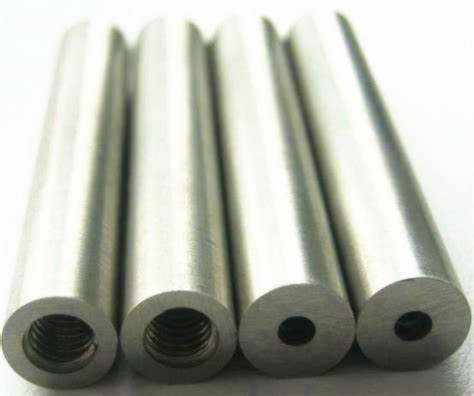The Tungsten rods or electrodes are commonly used while welding arc with TIG process – Tungsten Inert gas – or while welding plasma. In the two cycles the anode, bend, and weld pool is shielded from climatic pollution by a dormant gas.
A tungsten anode is utilized in light of the fact that it can withstand high temperatures with negligible liquefying or disintegration. Cathodes are made by powder metallurgy and are framed to estimate subsequent to sintering
Here are some common mistakes which often people commit while grinding tungsten electrodes for tig wielding;
1. Not Grinding the Electrode
That’s a big No-Go! You ought to grind your electrode for whatever application you’re using. Some people believe that it’s not necessary, but it is when you buy the package, it’s often blunt, so you need to grind it, and it has to be a little bit pointy as it eases the ignition of Arc
So yes, you need to grind your electrode just a bit to ease the ignition of the arc.
2. Wrong grinding direction
You need to grind your electrode lengthwise, that means on the length of the electrode. If you grind it radially that means perpendicular to the electrode, you’ll have ripples on it, and you’ll have an unstable arc – a wondering arc.
3. Poor Choice of Geometry
Not choosing the right point or blunt for your project, or any required application regarding tungsten rod can end up making the entire effort useless.
Since it has been already discussed before that the pointy you have on an electrode, the bigger would be a risk of the melting tip due to less heat resistance, and then it can fall into weld pool polluting your whirlpool a very sharp and pointy rod.
This means less penetration in your material. A blunter tip is harder to ignite, yet provides deeper penetration in your welding material. Let’s take an example of aluminum, again few people hold beliefs that they don’t need to grind it, but you can make it blunt.
Grinding your electrode eases the ignition of arc, but while welding aluminum, the rod will melt, melted tungsten is never required in the weld pool but you need to minimize the amount of electrode so that you can risk falling into the weld pool. This is done by blunting the pointed tip.
4. Choice of Grinder
Many tungsten rod manufacturers and many shops have angle grinders, belt grinders, or bench grinders; all are not much worth using as compared to tungsten rod/electrode grinders.
The main reason to emphasize tungsten here is, it is a heavy metal. According to research, tungsten combined with nickel and cobalt is carcinogenic, which anyone won’t like to have of course.
Hence, it’s a must to collect all the dust so you don’t get it in your body.
5. Cutting or Breaking the Tip After a Dip
People often tend to break their tungsten by applying a sharp edge either on a table and hammer it, and then breaking it. The problem is that you might break your tungsten lengthwise.
On other hand, you might split or break the entire tungsten, so you can’t use it. Other people prefer cutting it, which is somehow a step in the right direction, only If you cut it correctly.
While some people choose an angle grinder to cut it, but I will never prefer an angle grinder because then you create the dust we just discussed before. If you want to cut your tungsten, then make sure you cut it in a sealed chamber and collect all dust.

